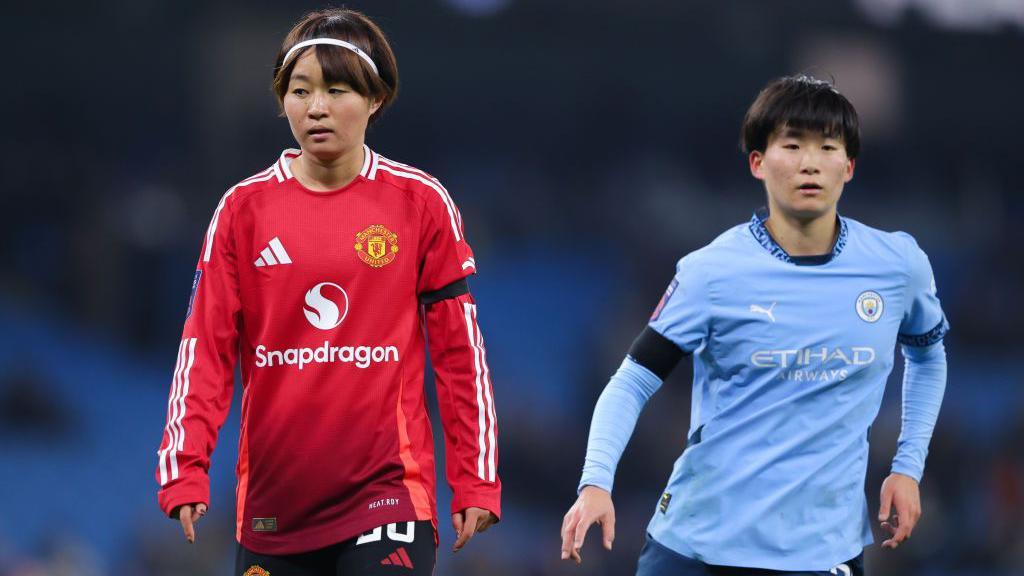- 8 Comments
There are more Japanese players in the Women’s Super League than ever before and it is easy to see why.
As a national team, Japan have enjoyed success on the global stage – winning the 2011 Women’s World Cup and finishing runners-up in 2015.
They have always produced talent, but it is only in recent years that the WSL has really started to take heed.
What makes Japanese players an attractive prospect?
Investment in the women’s game has provided more resources for expert analysts, higher-quality video footage and better scouting networks.
It means Asian talent is being scouted on a regular basis and the visibility of Japanese players, in particular, is putting them on the radar of the WSL’s top clubs.
After winning the Golden Boot at the 2023 Women’s World Cup, Hinata Miyazawa joined Manchester United, while talented youngster Maika Hamano had bagged a move to WSL champions Chelsea a few months earlier.
They followed in the footsteps of established stars such as Yui Hasegawa, who began her WSL career at West Ham in 2021 and moved to Manchester City a year later.
Last year, Kiko Seike was a relative unknown to Brighton fans until she netted a hat-trick on her WSL debut in a 4-0 win over Everton.
The Toffees themselves signed three Japanese players this summer, while Fuka Tsunoda and Moeka Minami joined Seike at Brighton.
All of them have made their mark and Japan assistant coach Leah Blayney has been following their progress carefully.
“Investment will only see more Japanese players come into the league when people become more aware of their quality,” Australian Blayney told BBC Sport.
“They are highly technical players and extremely robust. I think they are attractive because they can fit into most tactical playing systems.
What impact have Japanese players had?

The biggest Japanese name in the WSL is undoubtedly Manchester City midfielder Hasegawa, who was signed as a replacement for England’s Keira Walsh in 2022 when Walsh left to join Barcelona.
Hasegawa has been named in the PFA’s team of the year in each of her three seasons at the club and was voted City’s best player in 2024-25.
Having been an ever-present in the number six role, Hasegawa has impressed even more this season under new boss Andree Jeglertz – playing higher up the pitch.
“Without a doubt, Yui Hasegawa is a world-class midfielder. I would put her up there with the names of Aitana Bonmati and Mariona Caldentey. She is quality,” said Blayney.
“Her ability to move the ball under extreme pressure and turn quickly to find a forward pass sets her apart from a lot of number six midfielders in the world who maybe play a little bit safer.”
Hasegawa’s team-mate Aoba Fujino has also impressed during her time in Manchester, netting two goals and setting up another across five WSL games with City this season.
They have come up against rivals United, including compatriot Miyazawa, on several occasions in the WSL.
Blayney has visited both clubs since taking on her role with the Japan national team in January, and regularly attends matches and training sessions.
“I’ve been really impressed with Hinata [Miyazawa] at the moment. You can see her improvements in the last couple of months,” said Blayney.
How they are being supported
A large part of Blayney’s role is to travel to England and spend weeks at a time analysing the performances of Japan’s players.3
She also provides player care – helping them manage language barriers, settle into new cities and link them up with other Japanese players in the league.
In the week she spoke to BBC Sport, she had attended games at Brighton, Manchester United and Liverpool.
She saw Risa Shimizu score for Liverpool in their Women’s League Cup win over Sunderland and Miyazawa dominate in United’s 3-0 win over Brann in Europe.
“Since January, I have been immersed in England quite frequently. I’ve been collaborating with coaches directly and that’s been excellent for Japan,” Blayney said.
“They live on the other side of the world, away from home and their families. Sometimes just having a familiar face is important.
“I was a former player who lived abroad so I understand the challenges. I always let the players know I’m coming to their games, but not Aoba Fujino because her face when she sees me always makes me smile.”
With so many Japanese stars in the WSL, clubs are introducing ways to help them settle, providing translation services and offering English speaking lessons.
Manchester City cook Asian-themed meals before matchdays and allow their Japanese players to return later in the winter break so they can celebrate new year with families back home.
As a result, the WSL is an attractive destination for Japan’s top stars and their emerging generation, and Blayney hopes more will make the move in the future.
“It is terrific for the younger players in Japan to see there is a pathway to the top leagues,” said Blayney.
“If I use Hikaru Kitagawa as an example from Everton, all the girls in England came around her and helped support her with the transition.

Related topics
- Football
- Women’s Football
Source: BBC

Leave a Reply